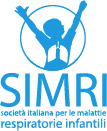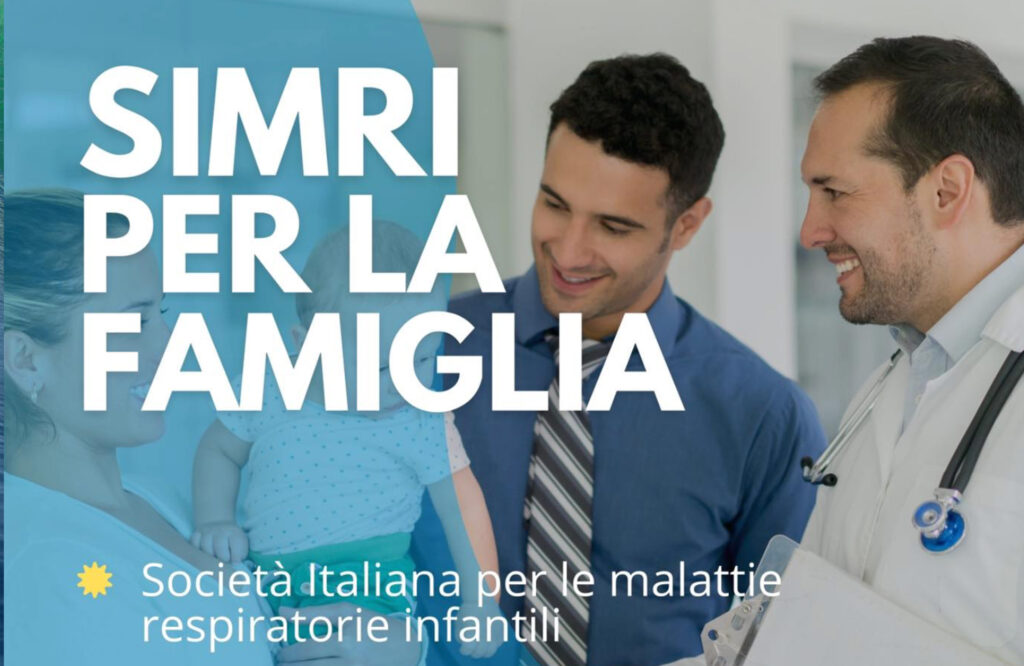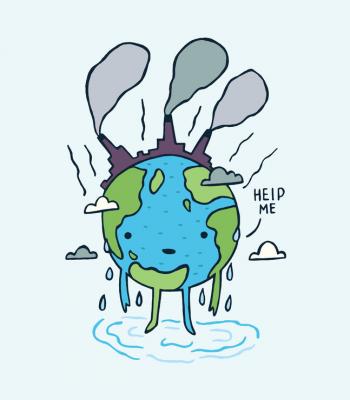The literature seems to suggest that children are more vulnerable than adults to the consequences of climate change. One of the central themes of the global political debate in recent years is linked to climate change. This topic has therefore become the focus of numerous scientific studies, including many concerning its impact on children’s health. However, until now, literature reviews analyzing the impact of climate change on human health have provided valuable insights into the effects of climate change but have been mostly descriptive and have not quantitatively evaluated the effects on children’s health.
Why Climate Change Is a Health Crisis for Children.Methodology and Scope of the Systematic Review
It is estimated that climate change has pushed about 600 million people outside the so-called “human climatic niche,” meaning outside the geographic area where an ideal temperature for human survival is found (1). It is important to be aware that climate change is a health issue. Among health professionals, the perception is widespread that climate change is harming health, but how exactly it affects health is perceived as unclear (2). Below, we analyze a recent systematic review and meta-analysis that aimed to identify the relationships between climate and health, particularly comparing the relative risk of specific health outcomes with different climatic and environmental variables (1). The current evidence on how climate change affects children’s health has been summarized, identifying the areas of child health with the greatest morbidity risks. Finally, current knowledge gaps have been highlighted, suggesting new and future directions for research.
Respiratory Illnesses and Asthma: Rising Pediatric Burden
The relationship between daily average temperature and mortality was first explored. Exposure to temperatures below the 5th percentile of the daily average temperature resulted in an increased probability of mortality for all diseases, as did exposure to temperatures above the 95th percentile. Particular attention in various studies has been paid to the incidence of asthma and infectious respiratory diseases. A cohort study in Fuzhou, China, involving 796,125 participants, demonstrated that lower average temperatures (below the 25th percentile of the usual range) are associated with an increased risk of hospitalization for respiratory diseases in children (3). Similarly, in a study conducted in Beijing, at extreme temperatures, an increase in pediatric emergency department visits for respiratory problems was recorded, with effects lasting longer in children under 15 years of age compared to adults over 65 years of age (4). Likewise, another Chinese study found that even an increase of just 1°C during hot periods in Chinese cities had a significant impact on increasing the likelihood of death from major diseases (5), with a corresponding increase in pediatric emergency department visits for asthma (6, 7).
Climate Impact on Perinatal Outcomes: Preterm Birth and Low Birth Weight
Numerous studies have examined the influence of temperature variations on respiratory infections. Exposure to lower temperatures was found to be associated with an increased risk of infections caused by parainfluenza virus, respiratory syncytial virus (RSV), influenza A virus, coronavirus, and viral bronchitis/bronchiolitis in children (1). However, there is no unified definition of the concept of “lower temperature” across all the cited studies. It is defined arbitrarily, but regardless of the definition, the effects appear to be consistent. The impact of extreme temperatures on perinatal outcomes was also evaluated in this meta-analysis. The primary health outcome measured was preterm birth, followed by low birth weight and the likelihood of miscarriage. It emerged that the factor most frequently correlated with temperature variation is birth before the 37th week of gestation, followed by low birth weight. This finding is evident both when external temperatures exceed the 97th percentile of the maximum daily temperature for two consecutive days and when heavy rainfall is recorded during the third trimester of pregnancy (8).
Rainfall, Diarrheal Disease, and Food Safety Risks. Air Pollution, PM2.5, and Birth and Respiratory Outcomes
In the latter case, it seems that a key role is played by the correlation between rainfall and food safety related to bacterial proliferation. A higher rate of diarrhea was recorded in Uganda and Tuvalu (1) in correlation with reduced rainfall (at the 15th percentile compared to the 50th percentile). Conversely, studies analyzing the effects of increased rainfall, such as those conducted in Rwanda, the Netherlands, and Peru (1), found a lower rate of infectious diarrhea episodes. Another aspect analyzed was the correlation between air pollutants and low birth weight. This was examined both in a cross-sectional study in Africa (9) and a Chinese study (10).
Air Pollution, PM2.5, and Birth and Respiratory Outcomes
The conclusions of these studies suggest a strong correlation between the risk of intrauterine death and each 1 μg/m³ increase in PM2.5, depending on the type of pollutant (1). The relationship between air quality or aeroallergens and children’s respiratory health (mainly the risk of asthma) was also explored. The most studied air pollutant is PM2.5, followed by aeroallergens, PM10, O3, and NO2. Although a correlation between these pollutants and an increased risk of asthma is evident, further studies are needed to determine the exact impact of individual allergens and pollutants on major respiratory diseases. The severity of health outcomes in children is influenced by various factors, such as socioeconomic status, access to healthcare, local climate, infrastructure quality, and geographic location. It emerged that low- and middle-income nations, where children lack access to healthcare, adequate infrastructure, and appropriate food networks, have been less studied, resulting in numerically limited data on these populations. This limits the applicability of the results to these groups. Health inequalities will worsen with advancing climate change unless global responsibility for climate mitigation increases over the next decade.
Economic Costs of Climate-Related Pediatric Illnesses
The importance of distinguishing between climate change and extreme weather events was also highlighted. These events, in turn, can have a significant impact on health, but further investigation is needed to assess their long-term effects. Another aspect lacking statistical analysis, which is deemed potentially significant, is the impact of air pollution on children’s mental health. Studies investigating possible correlations between climate change and nutritional status, atopic diseases, diabetes onset, or nephropathies are also scarce in the literature. Another concerning and intriguing aspect highlighted is the indirect impact on community well-being: climate-exacerbated diseases (such as preterm birth and asthma) can generate increasingly high financial costs. Staying on the topic of the global economy, the treatment of wildfire-related asthma in the United States has been estimated to cost up to $1.5 billion annually (11). Another study (12) analyzed the costs in the U.S. of a single episode of childhood asthma, which can reach $23,573 per case. These analyses suggest that as climate change influences childhood illnesses, social and financial costs will continue to rise, placing increasing pressure on families and healthcare systems.
Conclusion: Research Gaps, Public Health Priorities, and Policy Directions
This meta-analysis found that most studies explored the effects of climate on perinatal outcomes (particularly preterm birth), respiratory issues, and child mortality/morbidity rates, comparing these aspects with temperature variations and increased air pollutants. A correlation between preterm birth and temperature variation was evident, but it was not possible to determine the exact extent of temperature variation required to trigger or worsen a clinical condition. Extreme temperatures and air pollution appear not only to have a significant impact on childhood illnesses but also to have a synergistic effect on these diseases and preterm birth. However, further studies are needed to quantify the extent of interactions between climatic variables and their clinical manifestations. This systematic review of the literature clearly shows that children have already been affected by climate change: the increase in preterm births, respiratory diseases, mortality, and the number of hospitalized children are just some of the health issues societies will face as climate change worsens. To devise effective measures to counteract the potential side effects of climate change exposure, it is crucial first to understand the mechanisms underlying the pathogenesis of these climate-induced disorders. This necessarily implies greater attention to data collection and analysis to derive more accurate projections of climate health risks for children.
REFERENCES
- Weeda, L. J. Z., Bradshaw, C. J. A., Judge, M. A., Saraswati, C. M., & Le Souëf, P. N. (2024). How climate change degrades child health: A systematic review and meta-analysis. Science of the Total Environment, 920, 170944. https://doi.org/10.1016/j.scitotenv.2024.170944
- J. Hathaway, E.W. Maibach, Health implications of climate change: a review of the literature about the perception of the public and health professionals. Curr. Environ. Health, Rep., 5 (2018), pp. 197-204
- Z. Wu, C. Miao, H. Li, S. Wu, H. Gao, W. Liu, W. Li, L. Xu, G. Liu, Y. Zhu. The lag-effects of meteorological factors and air pollutants on child respiratory diseases in Fuzhou, China. J. Glob. Health., 12 (2022), pp. 1-9
- Y. Ma, J. Zhou, S. Yang, Z. Yu, F. Wang, Effects of extreme temperatures on hospital emergency room visits for respiratory diseases in Beijing China. Environ. Sci. Pollut. Res., 26 (2019), pp. 3055-3064
- Y. Li, Y. Cheng, G. Cui, C. Peng, Y. Xu, Y. Wang, Y. Liu, J. Liu, C. Li, Z. Wu, P. Bi, Y. Jin. Association between high temperature and mortality in metropolitan areas of four cities in various climatic zones in China: a time-series study
Environ. Health, 13 (2014), p. 65, 10.1186/1476-069x-13-65
- S. Soneja, C. Jiang, J. Fisher, C.R. Upperman, C. Mitchell, A. Sapkota. Exposure to extreme heat and precipitation events associated with increased risk of hospitali- zation for asthma in Maryland, U.S.A. Environ. Health, 15 (2016), pp. 1-7
- Z. Xu, C. Huang, W. Hu, L.R. Turner, H. Su, S. Tong. Extreme temperatures and emergency department admissions for childhood asthma in Brisbane. Australia. Occup. Environ. Med., 70 (2013), pp. 730-735
- H. Randell, C. Gray, K. Grace. Stunted from the start: early life weather conditions and child undernutrition in Ethiopia. Soc. Sci. Med., 261 (2020), Article 113234
- J. Bachwenkizi, C. Liu, X. Meng, L. Zhang, W. Wang, A. van Donkelaar, R.V. Martin, M.S. Hammer, R. Chen, H. Kan
Maternal exposure to fine particulate matter and preterm birth and low birth weight in Africa. Environ. Int., 160 (2022), Article 107053, 10.1016/j.envint.2021.107053
(10)Y.Y.Wang, Q. Li, Y. Guo, H. Zhou, X. Wang, Q. Wang, H. Shen, Y. Zhang, D. Yan, Y. Zhang, H. Zhang, S. Li, G. Chen, J. Zhao, Y. He, Y. Yang, J. Xu, Y. Wang, Z. Peng, H.J.Wang, X. Ma. Association of long-term exposure to airborne particulate matter of 1 μm or less with preterm birth in China JAMA Pediatr., 172 (2018), article e174872, 10.1001 /jamapediatrics. 2017.4872
(11) J.D. Stowell, C.E. Yang, J.S. Fu, N.C. Scovronick, M.J. Strickland, Y. Liu Asthma exacerbation due to climate change-induced wildfire smoke in the western US. Environ. Res. Lett., 17 (2022), Article 014023, 10.1088/1748-9326/ac4138
(12) E. Shea, F. Perera, D. Mills. Towards a fuller assessment of the economic benefits of reducing air pollution from fossil fuel combustion: per-case monetary estimates for children’s health outcomes. Environ. Res., 182 (2020), Article 109019, 10.1016/j.envres.2019.109019
No metadata found.





